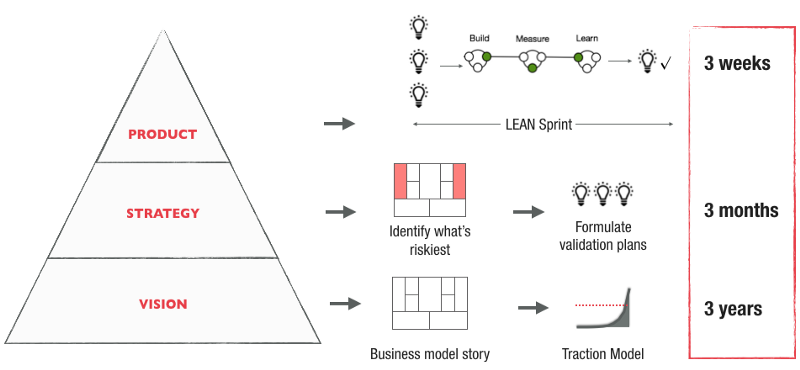One of our clients was implementing an AI initiative. The MD of the business unit invested heavily but further down the line, was becoming impatient on the initiative outcomes. He was focusing on concepts like revenue, optimisation, entering new markets. What he was hearing about was, AI, cloud and training models. An ongoing joke developed that this product was based on the “Underpants Business Model”. In the Southpark episode, Gnomes draw a blank when trying to connect their fervent activities with profit. (The 30th episode)

The problem with Underpants Business Models
These gnomes may sound ludicrous, but how many of these Underpants projects have we all been involved in? Companies are simply not great at setting a clear vision and communicating this to employees and partners. This counts for overarching visions (e.g. Vision statements) as well the interpretation of the vision on a contextual micro-level. There is a huge cost to not setting a clear vision, including:
- Wasting technology investment. Tech is fast, vast and any lack of clarity flows through to a sub-optimal “Frankensteinesque” product.
- It hinders experimentation. Without clarity, there can be no useful metrics on the intended arrival point and there are weak feedback loops. This can breed Zombie Projects rather than a portfolio of rapid, incremental products.
- It destroys employee engagement. At a time when attracting and retaining talent is key, a lack of vision makes every day a Sisyphean task. Sisyphus was condemned by the gods to push a bolder up and hill continuously without any end point. People need to see their efforts making an impact to the result and an endpoint.
Setting a vision
In the very first instance you need to know what game you are in. This can be confusing in the current context. Are you in:
- EXPLORATION MODE: searching for new features, products, markets or business models? Or are you in:
- EXPLOITATION MODE: taking something that already works well and optimising it for competitive benefit.
An EXPLOIT vision could involve focusing on cost optimisation, faster speed to market, growing sales. EXPLORE required activities involved in finding a new product, market or meeting an unmet need.
Strategyzer explains this well.

Even if your project is part of a wider vision (e.g. a product in an Innovation portfolio) there needs to be a very clear (and simple) link between “sub-visions”, initiative vision and the overall Organisational Vision. This will ensure teams keep making decisions with the end goal in mind.
Setting a Vision
While intrapreneurship is still in its infancy, startups have developed mature models for shaping value propositions. Take The LEAN Canvas: a model that slightly optimises the Strategyzer Business Canvas.

In the context of a Lean Sprint, the Vision underpins a business model that lasts for around 3 years. I would add that it is paramount that a clear communication and ownership model needs to be in place. This continuously communicates the vision and new details as they emerge over time.
In my mind, investment is warranted to connect the vision to these different perspective. It is this link that demonstrates the original essence and is a defence against the company going off-track. ß
As a starting point, each of the key organisational personas need to be identified. The wide variety and interpretations of the daily work should be apparent. How can the vision be clarified in the context of each persona’s differing activities, projects and KPIs?
The Underpants Test
I would recommend that you start by asking yourself, and your team the following. Can anyone briefly explain:
- What is the overall vision?
- How does Unit that I’m working with (e.g. product, team, project) relates to the Vision?
- How does the that I’m doing (this week) relate to the Unit’s vision?
I would argue that investing in your organisation being able to answer these in a simply, clearly, correctly would put you way ahead of the competition and significantly increase the chance of success by reducing risks associated with failed execution, lack of feedback, and lack of employee engagement.
Even if an organisation’s product, company, or talent look too good to fail, without a clear vision there are too many factors left up to chance.